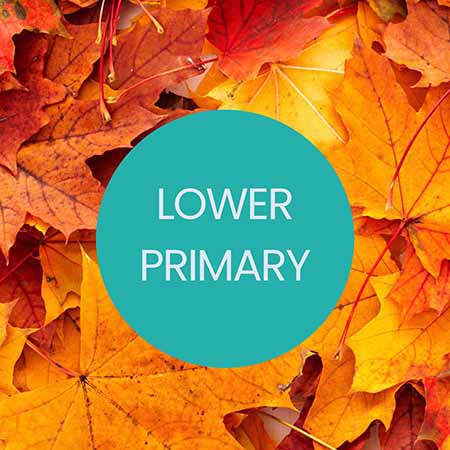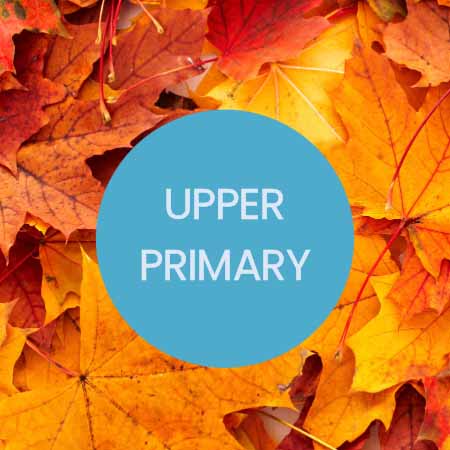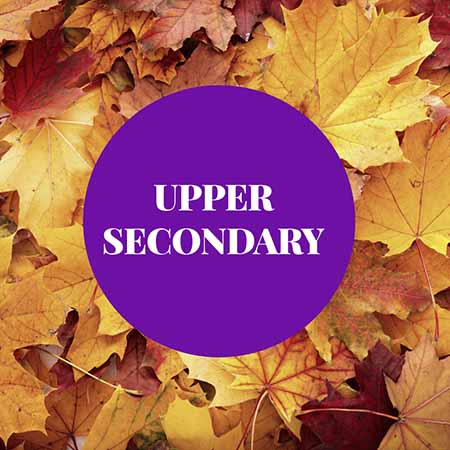SPECIAL PLACES
LOWER PRIMARY
1. Classroom map walk
Create a visual walk with a large floor map. Mark places like Uluru, the Mount of Olives, your local church, your school, and let students walk ‘barefoot’ on this map to learn that land can be holy and special to people.
2. Word walk – Learning our special words
Focus words: Sacred, listen, land, together, walk
Objective: To help students understand and use six key vocabulary words through movement, storytelling, and art.
Step 1: Word introduction
Sit in a circle and introduce each word one at a time using visuals, gestures, and a simple explanation:
• Sacred – something very special and holy.
(Show a picture of a church or sacred place)
• Listen – using our ears and hearts to hear others.
(Hands behind ears like listening birds)
• Land – the ground we walk on, live on, and care for.
(Point to a map or the classroom floor)
• Together – when we do something with others, not alone.
(Hold hands or link arms)
• Walk – to move with our feet. We walk when we go somewhere special.
(March in place)
Step 2: Word walk game
Set up six stations around the room with a picture and an object or mini-activity at each one (label each with one of the vocabulary words).
Example stations:
• Sacred – Quiet corner with a candle and a cross and Aboriginal symbol of Country.
• Sorry – Puppet says ‘I’m sorry’ to another puppet.
• Listen – Shells or sound tubes for careful listening.
• Land – Sandbox or nature tray with leaves, rocks, or soil.
• Together – Puzzle pieces to connect with a friend.
• Walk – Footprints leading to a special poster of the word.
Children walk with a partner from station to station, spending 1–2 minutes at each.
Step 3: Creative wrap-up
• Each child picks their favourite word and draws or paints a picture about it (e.g., ‘I drew people walking together,’ or ‘I drew ears for listening’).
• Finish by making a class mural or word wall using their art and the key words.
Optional extension:
‘Sacred places, we listen well, we walk together—can you tell?’
‘Sacred land beneath our feet, together we make peace complete!’
3. Read aloud
Read a simplified version of 'A sacred place' and discuss why people go to special places to talk to God.
A special hill called the Mount of Olives
By Zinta Hartmann (Simplified for young readers)
There is a very special hill near a big city called Jerusalem. This hill is called the Mount of Olives. A long time ago, many olive trees grew there, and people picked the olives to eat and make olive oil.
The Mount of Olives is special for many people. In the Bible, we read that Jesus went there to pray. He often visited a garden on the hill called the Garden of Gethsemane. On one very important night, Jesus went there to pray before he died on the cross.
After Jesus rose from the dead, Christians believe he went back to heaven from the top of the Mount of Olives. This is called the Ascension, and it gives us hope that Jesus is always with us.
Jewish people also think the Mount of Olives is a very holy place. They believe that one day the Messiah will come there. For more than 3,000 years, many people have been buried on the hill because they believe it is a sacred place.
If you walk to the top of the Mount of Olives today, you can see many churches, and you can look out and see a beautiful view of the city. It is a place full of history, prayer, and peace.
Comprehension questions
• What is the name of the special hill near Jerusalem?
• What kind of trees used to grow on the hill?
• Who went to the Garden of Gethsemane to pray?
• What did Jesus do after he rose from the dead?
• Why do many people want to be buried on the hill?
• What can people see when they stand at the top of the hill today?
• Why is the Mount of Olives special for Christians and Jewish people?
Children’s picture book: Back On Country: Welcome to Our Country by Adam Goodes, Ellie Laing & David Hardy
Comprehension questions
• Where are Lucy and David going with their family?
• Who do Lucy and David meet when they arrive on Country?
• What are some of the things Lucy and David learn during their visit?
• Why is going back on Country special for Lucy and David?
• What is one thing you learned from the story about Aboriginal culture?
(Encourage children to share something they remember from the story.)
4. Example of Jesus
Jesus walks to many places to pray and be with others, especially the Mount of Olives.
Ask: Where would Jesus go if he were here today?
5. Mural
Make a class mural titled: ‘Places of Peace and Prayer’. Students draw or paste pictures of sacred places, including Aboriginal sites.
SACRED PLACES HELP US GROW CLOSER TO GOD
UPPER PRIMARY
1. ‘Where would you go to feel close to God?’
Invite students to draw or describe a place where they feel peaceful or close to God (e.g., a church, a beach, a garden). Discuss why some places feel special or sacred.
2. ‘Sacred word quest’
Students explore and understand six key vocabulary words through movement, matching, and creative thinking.
MATERIALS
• Word cards (with the six words: Mount of Olives, sacred, resurrection, Gethsemane, ascension, anointing)
• Definition cards (simplified explanations of each word)
• Space in the classroom for a ‘Word Wall’ or sorting station
• Optional: Bible or class scripture book for cross-referencing
INSTRUCTIONS
Word hunt
• Hide the six word cards around the classroom.
• Students go on a ‘Sacred word quest’ to find them in small teams. As each word is found, the team brings it to the ‘Word Wall’ board.
Definition match
Hand out definition cards to the teams. They must work together to match each word to the correct definition and explain why they think it fits.
Word and picture challenge
Each team chooses one word and creates:
• A simple drawing or symbol that shows what it means
• A short sentence using the word
• A connection to the story of Jesus (with help from the teacher or Bible)
Sharing time: Teams present their word, sentence, and drawing to the class.
Optional extension
Turn the six vocabulary words into a ‘Sacred word booklet’ that students illustrate and keep in their RE folder.
3. Guided reading - Exploring a sacred place
Focus: Comprehension, vocabulary, and religious understanding through the lens of the Mount of Olives.
Read ‘A sacred place’ by Zinta Hartmann. The Mount of Olives is a place of significance in both Jewish and Christian scripture and history.
Before reading
• Set the scene with a map: Show students a map of Jerusalem and point out the Mount of Olives, Garden of Gethsemane, and nearby landmarks (like the Temple, Church of the Holy Sepulchre, and Western Wall).
• Quick predict and share: Ask students the following questions.
- What do you think makes a place sacred?
- Have you heard of the Mount of Olives or the Garden of Gethsemane?
During reading
• Read the article aloud in pairs or in a teacher-led small group. Pause at key moments to check understanding and invite questions.
• Partner or small group reading: As you read, highlight or underline the following vocabulary focus words: Sacred, Ascension, Resurrection, Gethsemane, Anointing
After reading
Students answer the following in pairs, groups, or individually:
• Where is the Mount of Olives?
• Why is the Mount of Olives important to Christians?
• Why is it special to Jewish people?
• What happened at the Garden of Gethsemane?
• What was olive oil used for in the Bible?
Optional extension: Draw and reflect
Invite students to draw one of the events (e.g., Jesus praying at Gethsemane or ascending from the Mount of Olives) and write a caption:
‘This place is sacred because...’
4. Scripture exploration
Read Acts 1:9–12 together (the story of Jesus’ Ascension).
Think-pair-share:
• What happens in this story?
• Why do you think Jesus went back to heaven in this way?
• What does this moment show us about Jesus?
• What kind of hope does it give to people who follow him today?
Extension (optional): Invite students to draw a picture or write a few lines about what they think the disciples felt as they watched Jesus ascend.
5. Time to pray
Think about it
Jesus often went to the Mount of Olives to pray, especially when he needed to feel close to God.
Let’s talk
• What does this tell us about how important prayer was to Jesus?
• When do you like to talk to God?
• Where is your favourite quiet place to pray or think?
Your turn
• Create a ‘Prayer Plan’ to help you make time to pray like Jesus.
• Choose a time (morning, lunchtime, before bed).
• Choose a place (bedroom, garden, special corner).
• Write or draw one thing you’d like to say to God today.
6. Build the Mount of Olives
Create a simple 3D model or map of the Mount of Olives area, showing important places for Christians and Jewish people.
Key locations to include:
• Garden of Gethsemane – where Jesus prayed
• Ascension site – where Jesus returned to heaven
• Jewish cemetery – a sacred burial ground
• Jerusalem city wall – nearby
• Olive trees – symbol of peace and life
STEPS FOR STUDENTS
Plan your model or map
• Decide: Will you use a shoebox, cardboard, playdough, or draw a pop-up map?
• Label the main features using small flags or sticky notes.
Research and sketch
• Look at photos or a simple map (teacher can provide printed or digital images).
• Draw a rough sketch before you build.
Create your model
• Use materials like cardboard, paper, sticks, string, pebbles, or LEGO.
• Shape the Mount (a hill), and place landmarks where they belong.
Add labels and a key
• Clearly mark Gethsemane, the Ascension spot, cemetery, etc.
• Use colour and a simple map key to explain what each part is.
Reflect and share
• Write or share one sentence about why the Mount of Olives is sacred.
• Display the models with captions or short prayers.
Support for diverse learners
• Provide templates for cutting and labelling
• Offer example maps/models for inspiration
• Use pairs or small groups for peer support
• Include options for drawing instead of building if needed
7. Create a pilgrim’s guide to the Mount of Olives
Imagine you are a guide showing a friend your special place — the Mount of Olives. Your job is to explain why it is a holy and important place for many people.
Step 1: Plan Your Guide
Think about these questions:
• What is the Mount of Olives?
• Why do Christians and Jewish people think it is special?
• What are some important places there? (e.g., Garden of Gethsemane, Ascension spot)
• What stories or events make it holy?
• What feelings might someone have when they visit?
Step 2: Choose your format
You can:
• Write a short guide (3–5 sentences or bullet points) using simple, clear language.
• Illustrate your guide with drawings or pictures showing the key places and why they matter.
• Do both! Write a few sentences and add drawings.
Step 3: Create your guide
• Start with a title like ‘Welcome to the Mount of Olives!’
• Write or say your important facts and stories.
• Draw colourful pictures of the Mount, the olive trees, the Garden of Gethsemane, and other sites.
• Use labels or captions to explain your pictures.
Step 4: Share and reflect
• Share your guide with a classmate or in small groups.
• Talk about what surprised you or what you found most interesting.
• Think about why learning about this place helps us understand respect and friendship between different people.
Support tips
• Provide sentence starters like:
‘The Mount of Olives is...’
‘It is special because...’
‘One important place is...’
• Use word banks with key vocabulary from the lesson.
• Encourage students to use crayons, markers, or digital illustration tools.
SACRED PLACES CONNECT PEOPLE
LOWER SECONDARY
1. ‘Places that matter’
In small groups, students brainstorm and list locations they believe are sacred to different world religions. Compare lists. Introduce the Mount of Olives and its significance.
2. Discovering keywords
Key terms: Ascension, Olivet Discourse, Shekinah, Messiah, resurrection, pilgrimage, anointing
Step 1: Activate prior knowledge
Before reading, discuss:
• Have you heard any of these words before? What do you think they mean?
• Which words seem familiar or completely new?
Step 2: Word detective
• As you read the article, underline or highlight these words.
• After reading, work in pairs or small groups to:
• Use context clues from the article to guess the meaning of each word.
• Look up definitions in a dictionary or online (teacher can provide reliable resources).
Step 3: Create meaningful connections
For each word, answer:
• How does this word connect to the story of the Mount of Olives?
• Why might this word be important for people who follow Judaism or Christianity?
Step 4: Apply your learning
Choose 2–3 words and:
• Write your own sentence explaining the word in your own words.
• Draw a small illustration or symbol that helps you remember what the word means.
Bonus challenge:
Create a mini glossary page with your words, definitions, sentences, and drawings to share with the class.
3. Guided reading
Step 1: Preparing to read
Vocabulary focus: Review your glossary of key terms from the vocabulary activity.
Set a purpose: Think about why the Mount of Olives is important for both Jewish and Christian people.
Step 2: Reading
Read ‘A sacred place’ by Zinta Hartmann. The Mount of Olives is a place of significance in both Jewish and Christian scripture and history.
While reading, highlight or underline any parts that mention the key vocabulary or describe why the Mount of Olives is sacred.
Step 3: Comprehension questions
Answer these questions, using evidence from the text:
• Where is the Mount of Olives located, and why is its geography important?
• What key events from the life of Jesus happened on or near the Mount of Olives?
• Explain the significance of the Mount of Olives in Jewish history and belief.
• What does the term ‘Shekinah’ mean, and why is it important in relation to the Mount?
• Why was olive oil considered special, both practically and spiritually?
Tip: For each question, underline the sentence or phrase from the article that helped you answer it.
Step 4: Small group discussion
In groups of 3–4:
• Share your answers and discuss any differences.
• Talk about this question: How does knowing about the Mount of Olives help us understand the relationship between history, faith, and place?
• Each group picks one idea to share with the class.
Step 5: Reflection and connection
Individually, write a short paragraph answering:
• What does the Mount of Olives teach us about respect for different faith traditions?
• How might learning about sacred places help us in building peace and understanding in our community?
Support tips
• Provide sentence starters for discussion and reflection, e.g., ‘One thing I learned is…’, ‘This is important because…’, ‘I think this shows that…’
• Encourage use of the glossary to explain key terms during discussion.
4. Scripture activity
Compare Acts 1:9–12 (Jesus' ascension) and Zechariah 14 (Messianic prophecy).
Discuss how both Christians and Jews see the Mount of Olives as a place of hope and future promise.
Step 1: Prepare to read
• Read Acts 1:9–12 (about Jesus’ ascension).
• Read Zechariah 14 (focus on verses about the Mount of Olives and the Messianic prophecy).
(You can provide printed copies or project the texts for easier access.)
Step 2: Guided reading
• As you read each passage, underline or highlight key phrases that describe what happens at the Mount of Olives.
• Note any words or ideas that seem similar or connected between the two passages.
Step 3: Compare and contrast
• After reading both passages, think about what happens on the Mount of Olives in each story. In Acts 1:9–12, focus on the event of Jesus’ ascension and what promise or hope this gives to Christians. In Zechariah 14, pay attention to the Messianic prophecy and what it means for Jewish people, especially regarding the future and the Day of Judgment.
• Next, consider the similarities between these two perspectives. How do both Christians and Jews see the Mount of Olives as a place filled with hope and promise? What feelings or beliefs do these stories inspire about the future? Reflect on how this shared significance might connect people of both faiths through a common place of faith and expectation.
Step 4: Group discussion
In small groups, share your answers from the table.
Discuss:
• How do Christians and Jews both find hope in the Mount of Olives?
• Why do you think this place is important for both faiths?
• How might understanding these shared hopes help build respect between people of different religions?
Step 5: Personal reflection
Write a short paragraph answering:
• What does the Mount of Olives teach us about hope and future promise?
• How can knowing about these beliefs help us in our own lives?
Support tips
Provide sentence starters for the reflection, such as:
• ‘The Mount of Olives shows that…’
• ‘Both faiths hope that…’
• ‘This teaches me that…’
Encourage students to use their own words but remind them it’s okay to refer back to the scripture passages.
Example of Jesus
Jesus chose the Mount of Olives as a place to pray, teach, and prepare for his Passion. Why might he have chosen this location?
Consolidating activity
Create an interfaith timeline or visual collage showing the Mount of Olives through Jewish and Christian history: ancient prophecy, Jesus’ ministry, the burial site, modern churches, and pilgrimages.
Culminating activity
Students write a reflection titled ‘Why sacred places matter’, using the Mount of Olives as their focus and drawing on what they’ve learned from both faith traditions.
ENCOUNTERING FAITH IN SACRED PLACES
UPPER SECONDARY
Curriculum links: Catholic Social Teaching, Scripture, Personal Reflection, Faith in Action, Literacy
1. Mapping sacred journey
Reflect on the concept of sacred travel and personal transformation.
Activity: Ask students to brainstorm places they consider sacred or personally meaningful. This could be a church, home, country of origin, retreat location, or even a quiet spot in nature.
• On a printed or digital world map, students mark places that have spiritual significance to them or to Christian tradition (e.g., Bethlehem, Jerusalem, Rome).
• Pose the question: What makes a place sacred? Is it history, community, prayer, or something else?
• Lead into the idea of pilgrimage and how place can shape faith.
2. Vocabulary development
• Key terms: Pilgrimage, Holy Land, Via Dolorosa, Stations of the Cross, humility, sacred
• Activity: Students work in pairs to match each word to a definition and identify how it appears in the article.
• Extension: Ask students to write a reflection paragraph using at least three of the words in the context of Blessed opportunity.
3. Guided reading exercise
Core Text: 'Blessed opportunity' by Ann Maria Sabu
The Holy Land pilgrimage I undertook in my early teenage years grounded me in the importance of living with purpose, humility and gratitude.
BEFORE READING
Think-pair-share prompt: Have you ever visited a place that helped you feel closer to God or reflect deeply about life? What made it meaningful?
Students jot down brief reflections.
Share in pairs, then gather a few responses for the class.
DURING READING
Instructions for students
As you read Blessed opportunity, highlight or underline any moments where Ann Maria describes:
• A change in her emotions
• Something she learned or began to understand
• A moment that helped shape her values
• Her connection to Jesus’ life
Encourage students to annotate the text with short notes in the margins (e.g., ‘felt awed here,’ ‘understood more about Jesus’).
AFTER READING
Guided discussion
Group into 3s or 4s. Assign each group a different set of guiding questions from below. After 10–12 minutes of discussion, have groups share a key insight with the class.
Group A – Emotional journey
• What emotions did Ann Maria experience during different stages of the pilgrimage?
• How did these emotions shape the way she experienced the sacred places?
Group B – Growth in faith
• How did Ann Maria’s understanding of Jesus’ life and suffering change as she grew older?
• What moment during the pilgrimage helped her realise this?
Group C – Influence of family and tradition
• What role did Ann Maria’s mother play during the pilgrimage?
• How did this influence the way Ann Maria prayed and experienced the churches?
Group D – Key moments of encounter
• Why was walking the Via Dolorosa such a significant experience for Ann Maria?
• What lasting impression did it leave on her, and why?
Group E – Values and vocation
• What values did Ann Maria say she gained from her pilgrimage?
• How has the experience influenced her ideas about how she wants to live her life?
Wrap-up reflection
Journal prompt (independent): Ann Maria says her pilgrimage taught her about ‘living with purpose, humility and gratitude.’ Which of these three speaks most to your life right now? Why?
• Encourage sharing from a few volunteers if time permits.
4. Scripture exploration
Focus texts:
• Luke 24:13–35 (The Road to Emmaus – encountering Christ on a journey)
• Psalm 84:5–7 (‘Blessed are those whose strength is in you, whose hearts are set on pilgrimage.’)
Activity:
• Read the texts in small groups.
• Discussion: How do these passages help us understand Ann Maria’s experience?
• Reflect: What does it mean to encounter God while on a journey? What kind of ‘pilgrimage’ might we be on today, even without leaving home?
5. Example of Jesus
Focus: Jesus’ life as a pilgrimage of purpose and sacrifice.
Prompt for discussion and journaling: Jesus walked many roads – to the Jordan River, to Galilee, to Jerusalem, to Calvary.
Invite students to reflect: What can we learn from how Jesus approached each stage of his journey? How can we walk our own paths with purpose, humility, and gratitude, like Ann Maria tried to do?
6. Personal reflection
Activity: Students write a personal reflection or letter to their future selves.
Prompt: Describe a moment in your life that shaped your faith or character. What did you learn from that experience? How might you carry that lesson into the future?
7. Pilgrimage project
Task: In small groups, students design a ‘Modern Pilgrimage’ experience for young Catholics.
They must include:
• Three ‘stations’ or places to visit
• A spiritual focus or theme (e.g., hope, justice, healing)
• A short prayer or reflection for each stop
• A visual or digital element (map, video log, art installation, etc.)
Present these pilgrimages to the class. Encourage creative presentation methods (drama, digital storytelling, podcast format, etc.)